Celandine poppy (
Stylophorum diphyllum), or wood poppy, is native to the woodlands of Appalachia. The bright yellow flowers and persistent blue-green foliage can brighten up the ground plane in a moist, shady woodland. It differs from many of the early-spring woodland species in that the foliage will persist well into summer and even into fall, given adequate moisture.
I first got interested in this plant while working as a gardener. I knew about the weedy, invasive greater celandine (
Chelidonium majus) and had gotten into the habit of weeding out any plant with yellow flowers and light green deeply lobed foliage, assuming it was always greater celandine. One day I started to rip some out in a client’s garden and was told by my supervisor that this was not a weed, and was in fact the native celandine. After I saw the native celandine in bloom, it became easy to see the difference and to appreciate the value of this woodland native.
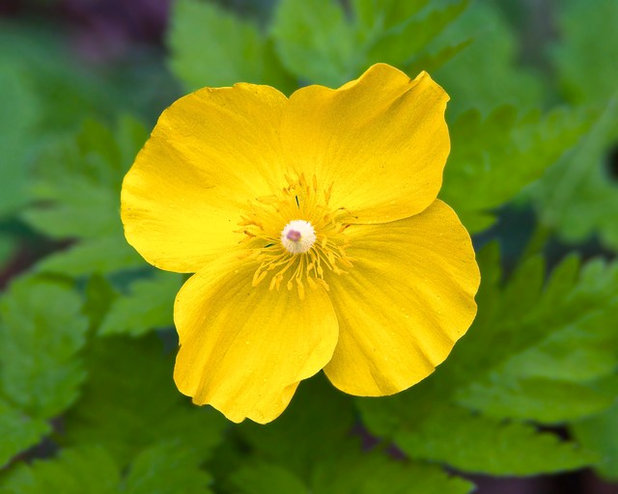 Botanical name: Stylophorum diphyllumCommon names:
Botanical name: Stylophorum diphyllumCommon names: Celandine poppy, wood poppy
Origin: The natural distribution is from western Pennsylvania south to northern Georgia and west to Missouri.
Where it will grow: Hardy to -30 degrees Fahrenheit (USDA zones 4 to 8; find your zone)
Typical plant communities: Rich, moist deciduous woodlands with good sun in early spring, then shady in summer; in nature it is often found around rocky streambeds and near the base of ravines and bluffs.
Water requirement: Prefers moist soil but will grow in a medium-moisture soil; will die back to the ground if it becomes too dry in summer
Light requirement: Does well in partial to full shade in the summer, and partial to full sun in early spring
Mature size: Typically 12 to 20 inches tall and about 12 inches wide
Benefits and tolerances: Will brighten a shady garden, both when in bloom and with its foliage; generally resistant to browsing by deer and other mammals (maybe due to the toxic chemicals found in its orange-colored juice)
Seasonal interest: Bright 2-inch-wide flowers appear in midspring; intense blooming continues for three to four weeks, with sporadic blooming continuing through the summer under favorable conditions; the foliage continues through summer.
When to plant: Plant container plants in the spring; you can also plant bare-root plants in spring and fall.
Photo by wplynn
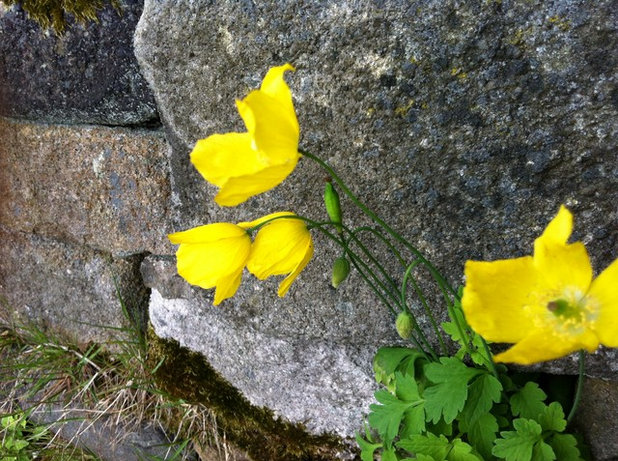 Photo by Simon Wheatley
Photo by Simon Wheatley
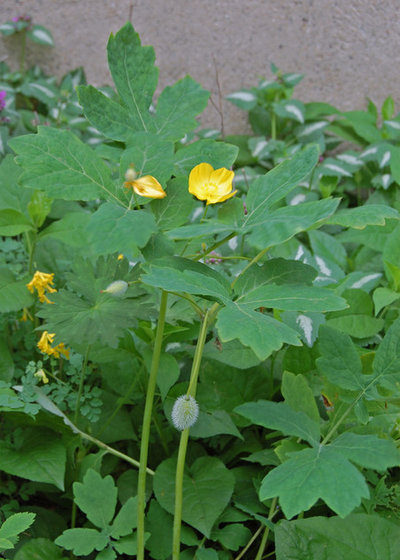 Distinguishing traits.
Distinguishing traits. Celandine poppy grows vigorously in spring, producing four-petaled, slightly ruffled flowers. Deadheading plants may bring additional blossoms and cut down on the quantity of seed produced. The flowers do not produce nectar. Instead, pollen-eating insects, particularly bees and flies, flock to it. Chipmunks like to eat the seeds, and ants will also gather the seed for their oily outer coating. As with many other woodland natives, the ants carry these seeds into their nests, effectively planting them in the process.
The yellow sap has been used as a dye, among other things, by Native Americans. This dyeing property is evident in that the sap will discolor any clothing it soaks into. The sap is also toxic and irritating to some. To be on the safe side, wear gloves when cutting or pulling up these plants.
The deeply lobed blue-green foliage can brighten a shady spot. In good shade and with consistent moisture, the foliage can last most of the summer.
Shown: Celandine poppy both in flower and with the dangling seedpods, in mid to late spring
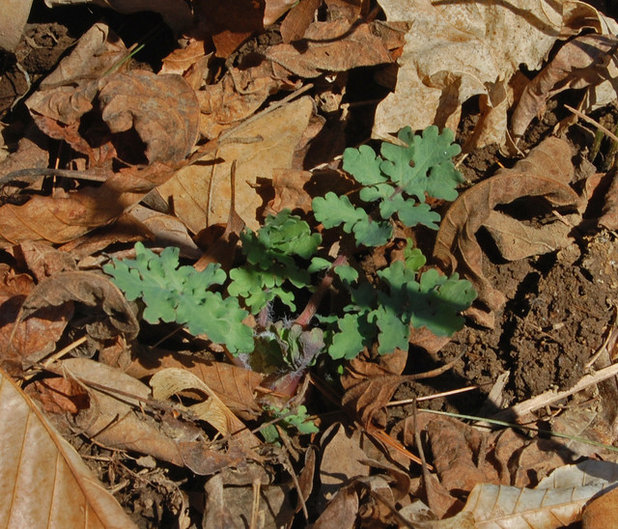
Here is what celandine poppy looks like when it sprouts in early spring. Superficially, it looks like a lot of garden weeds and other wild plants. It is good to keep a stake or plant tag nearby to avoid pulling it out, especially where there are many different plants growing. Where a plant has thrown off a lot of seed the previous summer, there may be dozens of these seedlings around the area.
The weedy, invasive plant often confused with celandine poppy is called greater celandine (
Chelidonium majus). It has gray-green foliage and smaller yellow flowers and a similar yellow, staining sap. The easiest way I see to distinguish between these plants is by looking at the flowers and seedpods.
The native celandine poppy has large, yellow flowers, borne singly, which mature to single fuzzy pods that droop toward the ground. Greater celandine has much smaller yellow flowers (½ inch) borne in small umbels. The seedpods are bean-like and project upward. Also, the leaves are arranged alternately on the stem, while the leaves of native celandine poppy occur opposite one another.
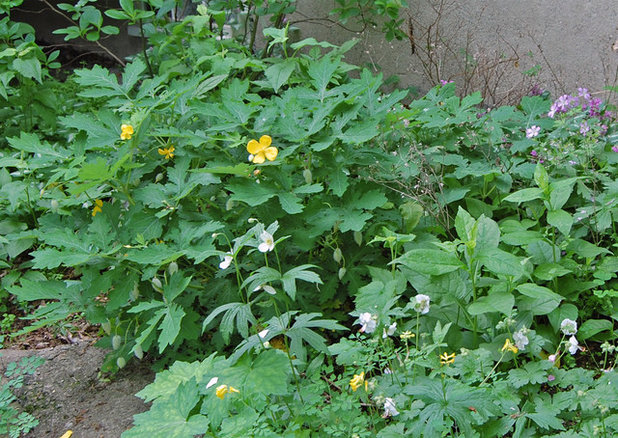 How to use it.
How to use it. This plant looks good combined with other woodland species, like trilliums (
Trillium spp),
woodland phlox (
Phlox divaricata) and Virginia bluebells (
Mertensia virginica). I was surprised that this yellow poppy also works with plants with pink flowers, like wild geranium (
Geranium maculatum). This combination probably works better in the shade than in full sun. The bright foliage contrasts nicely with that of darker-colored ferns, like ostrich fern (
Matteuccia struthiopteris).
The poppies seen here are growing quite well in drier-than-optimal soil, but there is no direct sun on this spot. Other plants in this composition include the white-flowered Canada anemone (
Anemone canadensis) and some cultivated geraniums called ‘Alba’. The plants with small, tubular flowers are yellow fumitory (
Corydalis lutea), and lots of the foliage is on bigleaf aster (
Eurybia macrophylla). The fumitory is not a native species, but it grows very well in slightly moist, shady situations.
It will fill in areas in a shady border by self-seeding. Celandine poppy is probably not a good choice for a formal planting, unless you are willing to do a little maintenance to keep the population in check.
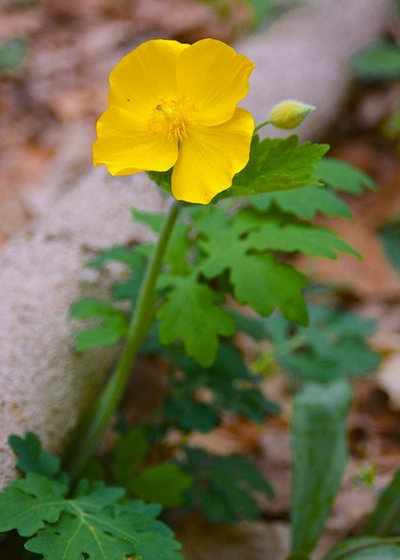 Planting notes.
Planting notes. Celandine poppy likes shady, moist conditions in rich, organic soil. I have had good results in only moderately moist, heavy soils. The most important thing is that the site doesn’t get too much late-day sun. Once established, this plant is relatively long lived.
Seed should be sown when fresh or stored in a cool, moist place. A period of warm, moist storage for 60 to 90 days followed by a cold-storage period is reported to result in good germination rates. I have seen colonies expand rapidly by self-seeding. These new little plants can then be dug up and divided easily in the spring.
Plants are available from several online nurseries and native plant nurseries. There is at least one large nursery that is local to my area in Maryland that is planning to sell these later in the spring.
Photo by wplynnMore: Browse plants native to other regions of the U.S.





